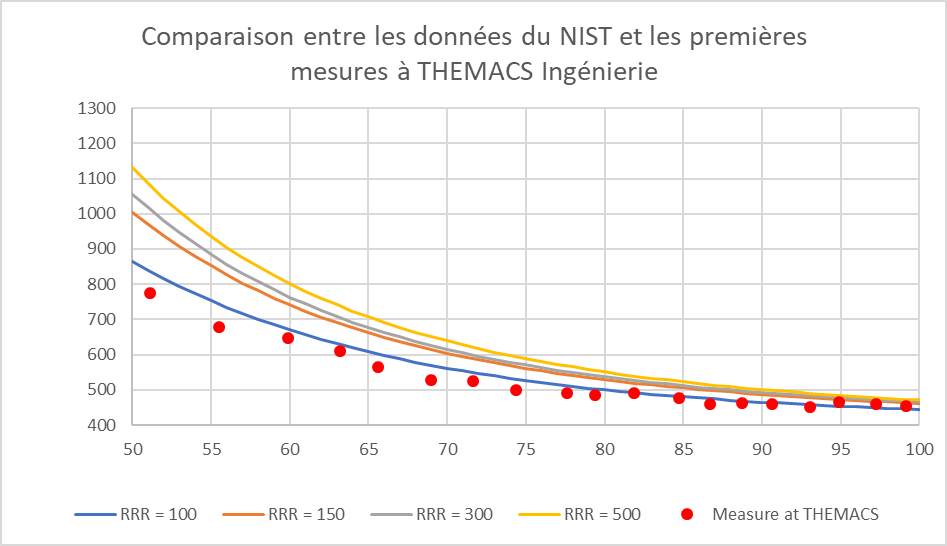Measurement of the thermal conductivity of copper in cryogenic conditions
We have begun the first measurements under cryogenic conditions of the thermal conductivity of copper samples.
Initial results are conclusive.
Article avalable here :
Mesure de la conductivité thermique du cuivre en condition cryogéniques en-GB
Principle of the method
The method adopted is specific to good conductors like copper.
experimental set-up
The experimental set-up is shown below.
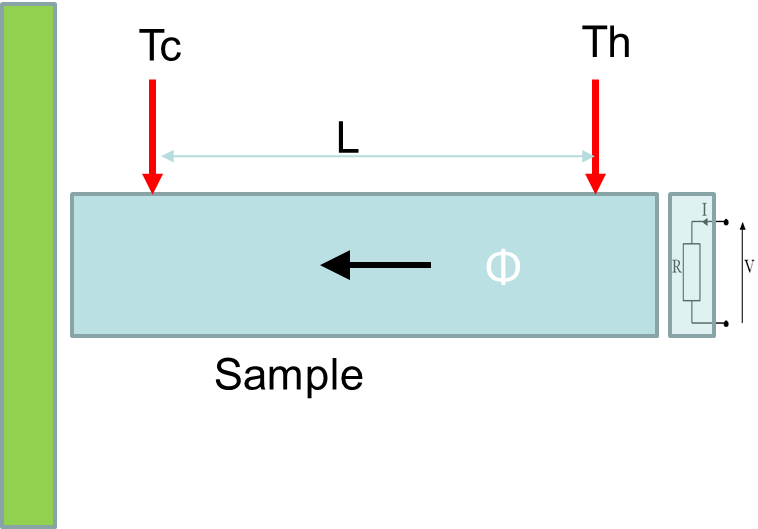
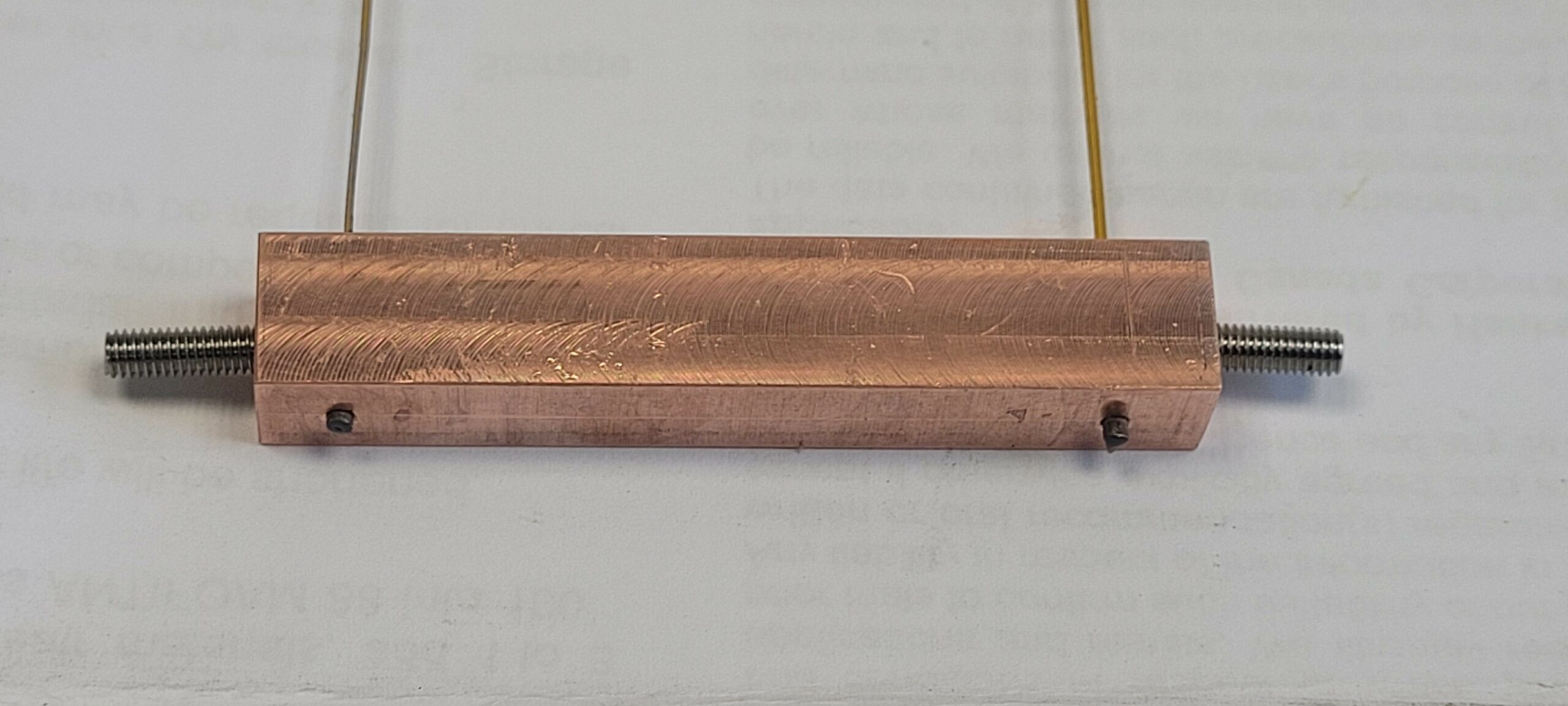
A pulsed heating system is used to continuously calibrate the temperature measurement diodes. A reference temperature sensor is placed on the cold part of the cold head. This sensor is a CERNOX with a calibration certificate.
Pulsed heating creates a heat flow in the sample and measures conductivity:
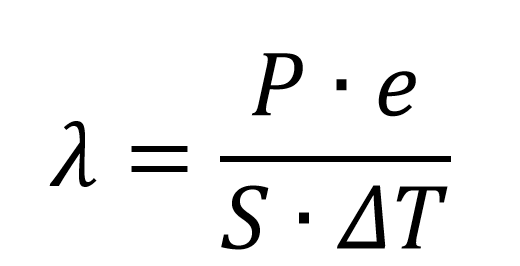
Where λ is the conductivity, P is the injected power, e is the length between the two measurement points, S is the cross-sectional area of the copper bar and ΔT is the temperature difference between the two measurement points.
During the phases when the heating is switched off, the diodes are calibrated to give the most reliable measurement possible.
An example of temperature measurements is shown below:
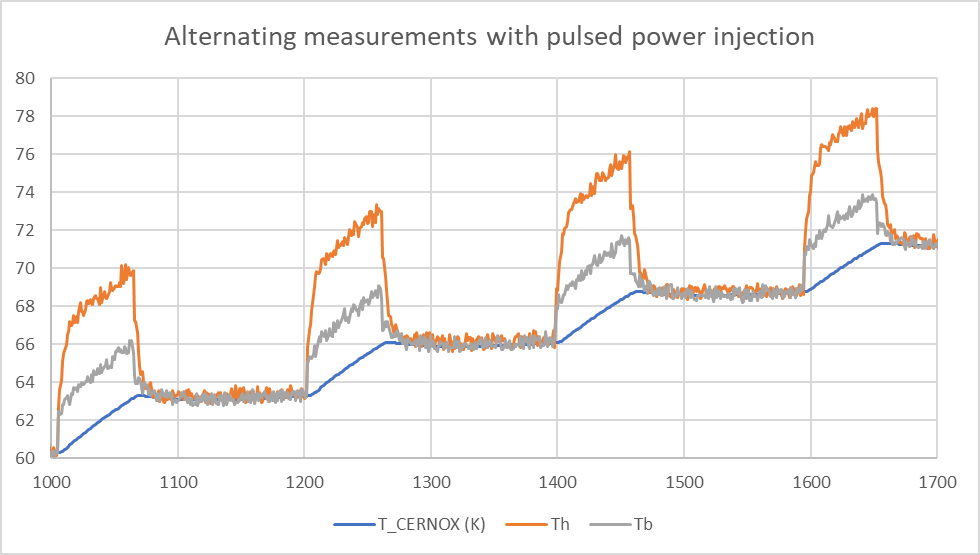
As the thermal diffusivity of copper is very high, steady-state conditions can be reached very quickly during both the calibration and conductivity measurement phases.
Results
The measurement results are compared with the NIST values and presented in the graph below:
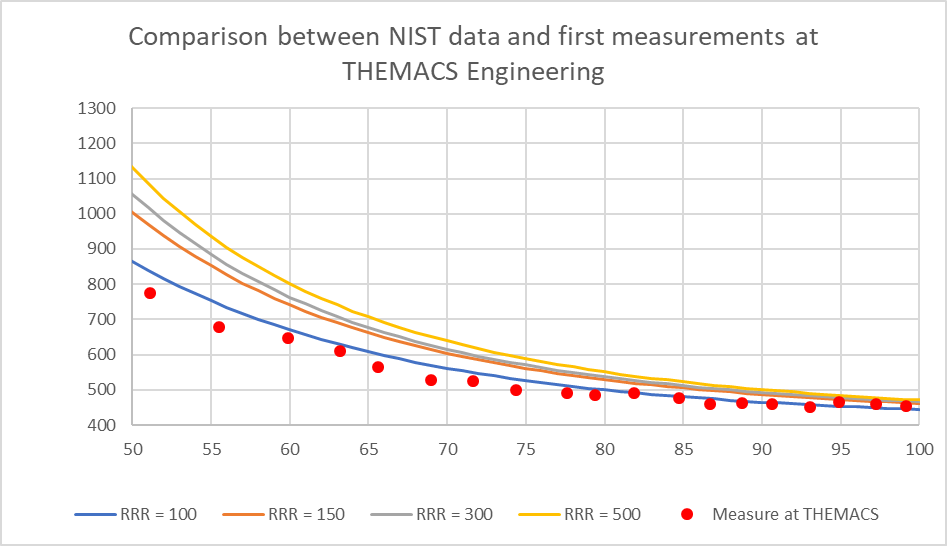
Conclusion
The measurement chain has now been validated, but the accuracy of the measurements still needs to be confirmed.
The first measurements below 50K are not currently usable because the cold head was not regulated precisely enough. The measurements were made by letting the temperature rise slowly.
For copper, the next step will be to modify the experimental set-up so as to be able to extract the diffusivity of the pulsed regime and to regulate the temperature with a PID in order to carry out measurements down to 6K.
The measuring device will also be modified to measure the thermal conductivity and heat capacity of epoxy-type polymers.

 A pulsed heating system is used to continuously calibrate the temperature measurement diodes. A reference temperature sensor is placed on the cold part of the cold head. This sensor is a CERNOX with a calibration certificate.
Pulsed heating creates a heat flow in the sample and measures conductivity:
Where λ is the conductivity, P is the injected power, e is the length between the two measurement points, S is the cross-sectional area of the copper bar and ΔT is the temperature difference between the two measurement points.
During the phases when the heating is switched off, the diodes are calibrated to give the most reliable measurement possible.
An example of temperature measurements is shown below:
A pulsed heating system is used to continuously calibrate the temperature measurement diodes. A reference temperature sensor is placed on the cold part of the cold head. This sensor is a CERNOX with a calibration certificate.
Pulsed heating creates a heat flow in the sample and measures conductivity:
Where λ is the conductivity, P is the injected power, e is the length between the two measurement points, S is the cross-sectional area of the copper bar and ΔT is the temperature difference between the two measurement points.
During the phases when the heating is switched off, the diodes are calibrated to give the most reliable measurement possible.
An example of temperature measurements is shown below:
 As the thermal diffusivity of copper is very high, steady-state conditions can be reached very quickly during both the calibration and conductivity measurement phases.
As the thermal diffusivity of copper is very high, steady-state conditions can be reached very quickly during both the calibration and conductivity measurement phases.


